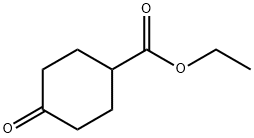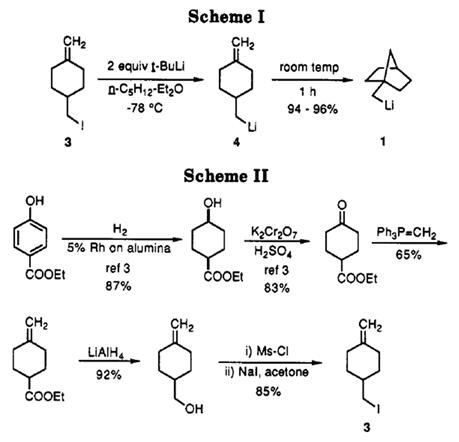Ethyl 4-oxocyclohexanecarboxylate: properties, applications and safety
General Description
Ethyl 4-oxocyclohexanecarboxylate is a naturally occurring ester with unique properties, including solubility in organic solvents, thermal stability, electrical insulation properties, and chemical resistance. Its applications are seen in the synthesis of neuropeptide Y antagonist 1, crucial for treating obesity. However, it poses safety concerns due to its slight toxicity, potential for skin and eye irritation, and flammability. Proper storage, ventilation, and personal protective equipment are essential for safe handling. Adherence to safety protocols and training minimizes associated risks. Overall, ethyl 4-oxocyclohexanecarboxylate's distinct properties make it suitable for various industrial applications while requiring careful management to ensure safety.

Figure 1. Ethyl 4-oxocyclohexanecarboxylate
Properties
Ethyl 4-oxocyclohexanecarboxylate is a naturally occurring substance found in the environment. It belongs to a class of organic compounds known as esters, which are formed through the reaction of an acid and an alcohol. This particular ester is derived from 4-oxocyclohexanecarboxylic acid, which is a cyclic fatty acid. Ethyl 4-oxocyclohexanecarboxylate has several important properties that make it stand out. It is a colorless liquid with a slightly fruity aroma. It is soluble in most organic solvents and insoluble in water. This ester is thermally stable, having a high decomposition temperature. It also has good electrical insulation properties and low dielectric constant, making it suitable for use in electrical insulation applications. Additionally, Ethyl 4-oxocyclohexanecarboxylate has good chemical resistance, being resistant to acids, alkalis, and most organic solvents. It has a low toxicity and is non-reactive with living tissue, making it suitable for use in industrial applications where human contact is likely to occur. In conclusion, Ethyl 4-oxocyclohexanecarboxylate is a unique substance with several useful properties, making it suitable for various industrial applications. 1
Applications
Ethyl 4-oxocyclohexanecarboxylate plays a crucial role in the synthesis of neuropeptide Y antagonist 1, which is currently being clinically investigated for the treatment of obesity. The convergent synthesis of 1 involves a stereoselective route to trans-spirolactone carboxylic acid intermediate 2a and aminopyrazole 3. The coupling reaction of ethyl 4-oxocyclohexanecarboxylate with lithiated isonicotinamide 11 initially resulted in a suboptimal 45:55 ratio of trans:cis isomers. However, improved stereocontrol was achieved through ketene chemistry, particularly by reacting a mixture of carboxylic acids 2a and 2b with POCl3 in THF, followed by addition of tert-butyl alcohol in the presence of TMEDA at 35 degrees C. This provided a 4:1 ratio of trans:cis tert-butyl esters via in situ ketene formation. Subsequent ester hydrolysis and selective crystallization led to the isolation of 2a in 47% overall yield. Aminopyrazole intermediate 3 was synthesized via the condensation reaction of 2-fluorophenylhydrazine hydrochloride with acrylonitrile derivative 5, and the coupling of advanced intermediates 2a and 3b via activation with thionyl chloride gave a 92% yield of neuropeptide Y antagonist 1. These results demonstrate the pivotal role of ethyl 4-oxocyclohexanecarboxylate in the successful synthesis of this potential obesity treatment. 2
Safety
Ethyl 4-oxocyclohexanecarboxylate, a colorless transparent liquid with a strong irritating odor, possesses certain safety considerations that must be carefully managed. This chemical is primarily utilized as a raw material for the synthesis of other fine chemicals and demonstrates solubility in ethanol, ether, and acetic acid. However, it is crucial to note that ethyl 4-oxocyclohexanecarboxylate is slightly toxic and has the potential to cause skin and eye irritation. Additionally, it is highly flammable, with its smoke being toxic. To ensure safe handling and storage, it is imperative to store this substance in a sealed container and keep it away from heat and open flames. Proper ventilation and personal protective equipment should be utilized when handling this chemical to minimize the risk of inhalation or skin contact. Furthermore, individuals working with ethyl 4-oxocyclohexanecarboxylate should be appropriately trained on its safe usage and emergency procedures. By adhering to these safety measures, the potential risks associated with this chemical can be effectively mitigated. 3
Reference
1. PubChem. COMPOUND SUMMARY: Ethyl 4-oxocyclohexanecarboxylate. NIH National Library of Medicine, PubChem CID: 317638.
2. Iida T, Satoh H, Maeda K, Yamamoto Y, Asakawa K, Sawada N, Wada T, Kadowaki C, Itoh T, Mase T, Weissman SA, Tschaen D, Krska S, Volante RP. Practical synthesis of a neuropeptide Y antagonist via stereoselective addition to a ketene. J Org Chem. 2005 Nov 11;70(23):9222-9229.
3. Ethyl 4-oxocyclohexane-1-carboxylate. European Chemicals Agency, EC / List no. 628-731-6.
Related articles And Qustion
See also
Lastest Price from Ethyl 4-oxocyclohexanecarboxylate manufacturers

US $0.00-0.00/KG2025-04-21
- CAS:
- 17159-79-4
- Min. Order:
- 1KG
- Purity:
- 99%
- Supply Ability:
- 20 mt

US $20.00/KG2025-04-21
- CAS:
- 17159-79-4
- Min. Order:
- 1KG
- Purity:
- 98%
- Supply Ability:
- 50MT/year



